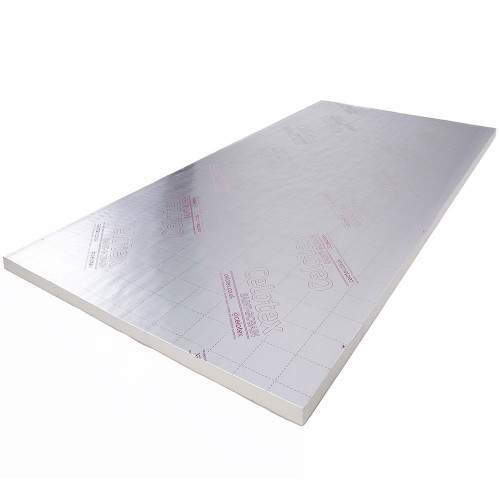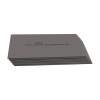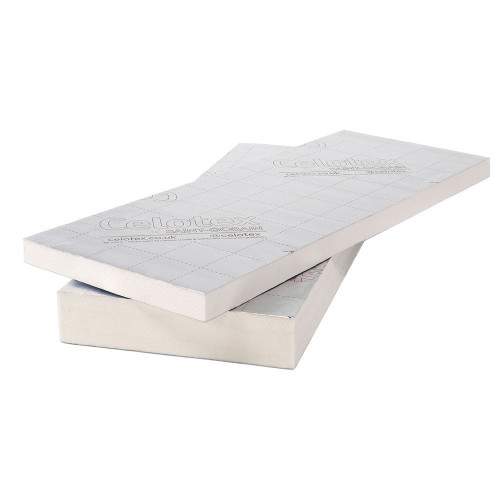U-value is the widely preferred unit in the UK that tells specifiers, builders, architects and engineers how good a material is at insulating.
There is also an R-value that will indicate this (read more on what an R-value is here) but U-values are preferred in the UK as they give a more rounded and accurate picture of heat loss from a material.
This is because U-values take into account conduction, convection and radiation too.
But what exactly is a U-value in insulation, and how is it measured?
Let’s find out!
Table of contents:
- U-values explained
- How do you calculate a U-value?
- U-value example
- Building Regulations U-values since 2022
- How do you measure U-value of constructions?
- Final thoughts
U-values explained
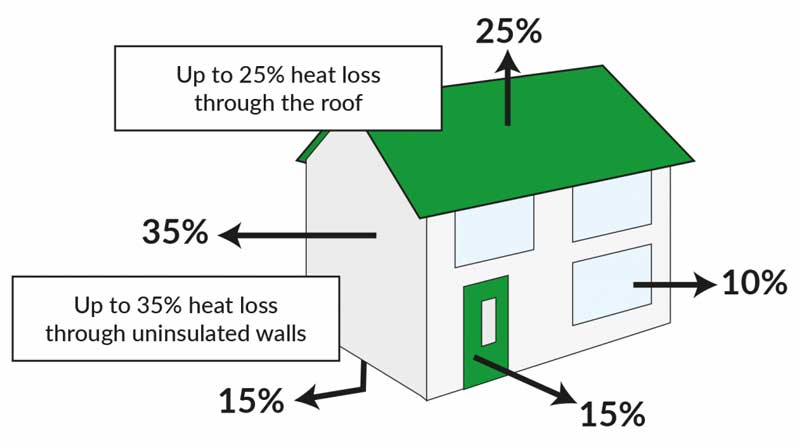
U-values indicate how much heat is lost through a certain thickness of the material by dividing the temperature difference inside and outside of a material by the rate of heat transfer. Since U-values work out how much heat is lost, the lower the U-value, the better.
There are U-value Building Regs set out in Building Regulations Approved Document Part L (Conservation of Fuel and Power), that gives the maximum U-value that materials and structures are allowed to have in a range of buildings, including domestic properties.
As per these U-value requirements for the UK, it’s expected that homes must be built to a certain standard of energy efficiency for both the reduction of carbon emissions and the reduction of residents’ heating bills.
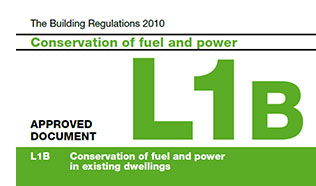
How do you calculate a U-value?
Essentially, a U value calculator works via W/m2K as the unit of U-values. It stands for Watts/metre squared Kelvin. U-value is the most difficult thermal measurement to calculate so it’s widely recommended that you run numbers through reliable U-value calculation software.
This software is readily available and is used by architects and specifiers alike to ensure they produce thermally efficient buildings. Small things like insulation fixings and mortar will affect an overall U-value but it’s very hard to work out exactly how this will, so it’s best to leave it to a computer.
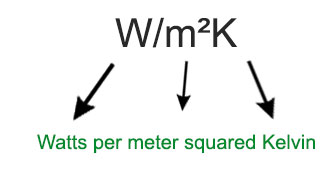
When assessing the ability of a material to insulate, you want a low U-value. For example, single glazed windows can have a U-value as high as 5.8, whereas VELUX PassivHaus quad-glazed windows boast U-values of 0.51. The difference in performance is absolutely phenomenal.
Try the Kingspan insulation calculator, an online tool and mobile app for Kingspan U-values across floors, walls, and roofs.
U-value example
U-values for walls of 1.2 W/m2K will transmit 1.2 watts per square metre for every degree of difference there is between inside and outside temperatures.
Building Regulations U-values since 2022
In 2022, Building Regulations U-values for new builds and renovations were amended. You can see the revised figures in our handy table below.
| New builds | New elements in existing dwellings | Existing elements in existing dwellings | |
| U-values for roofs | 0.11 W/m²K | 0.15 W/m²K | 0.16 W/m²K |
| U-values for walls | 0.18 W/m²K | 0.18 W/m²K | 0.30 W/m²K |
| U-values for floors | 0.13 W/m²K | 0.18 W/m²K | 0.25 W/m²K |
How do you measure U-value of constructions?
If you’ve finished a building project it’s wise to take some time to check the final U-value. This is so you can ascertain how accurate your initial calculations were on what the U-value was supposed to be, and so that you can see if you have or haven’t hit your U-value target.

You can confirm this for clients and management with an accurate U-value measurement. It’s also a good indication of design and build quality because if the U-value was supposed to be 1.2 but it’s actually 1.8 you may be able to put this down to installing the wrong thickness of insulation or using metal fixings instead of plastic, for example.
To measure the U-value of your construction, you should take a heat flux meter and attach this firmly to the test area. This will monitor the flow of heat from the inside to the outside.
Then, take the average temperature inside and outside of the construction over 2 weeks. When you get the average temperature difference between these two areas you can divide the average heat flux by this number. The longer the period of average measurements, the more accurate the U-value will be.

Final thoughts
The U-value of insulation is a crucial metric that quantifies the rate of heat transfer through a material or assembly, such as a building envelope. It represents the thermal conductivity of the material and indicates how effectively it resists heat flow.
Understanding and optimising U-values is essential in building design and energy efficiency efforts.
The thing is:
Lower U-values signify better insulation performance, meaning less heat loss in cold climates and reduced heat gain in warm climates, leading to lower energy consumption, improved comfort, and cost savings over the long term.
So, considering the latest U-values Building Regs and minimising U-values is fundamental for creating sustainable, energy-efficient buildings.
Ask us for more information or our recommended U-value calculation tools by calling us on 01752 692 206.



